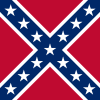

| Online: | |
| Visits: | |
| Stories: |

| Story Views | |
| Now: | |
| Last Hour: | |
| Last 24 Hours: | |
| Total: | |
Liberty: Its True Meaning In Tidewater
Here’s an equally important excerpt from David Hackett Fischer’s Liberty and Freedom: A Visual History of America’s Founding Ideas:
“In the summer of 1776, when Thomas Jefferson was toiling over the Declaration of Independence in Philadelphia, three of his friends in Virginia were hard at work on another assignment. The Virginia Convention on July 1, 1776, ordered Richard Henry Lee, George Mason, and George Wythe to “devise a proper seal for this Commonwealth.”
These men represented a small elite of Virginia gentlemen who had ruled their “Ancient Dominion,” as they liked to call it, for more than a century. Their ancestors had been younger sons of English gentry and aristocracy, who emigrated to Virginia in the mid-seventeenth century. Their families were Anglican in religion, Royalist in politics during the English Civil War, and shared a pride in rank and ancestry, with coats of arms on file at the College of Heralds in London. In Virginia they became landowners, slavekeepers, and officeholders, and members of a close-linked cousinage who shared common interests and values. Even as much of their wealth rested on slavery, they had a highly developed sense of their own liberty and freedom.
On July 5, 1776, these gentlemen of Virginia recommended a design for a state seal, which represented their special vision of liberty and freedom. On the front (or obverse) they put two allegorical figures: “Virtus, the genius of the Commonwealth, dressed like an Amazon, resting on a spear with one hand, and holding a sword in the other, and treading on TYRANNY, represented by a man prostrate, a crown fallen from his head, a broken chain in his left hand, and a scourge in his right.” Underneath they added the motto Sic semper tyrannus, thus always for tyrants.
On the back (or reverse) of the seal was the figure of “LIBERTAS, with her wand and pileus.” A familiar image of the Roman goddess was copied from a leading work of ancient iconography in their well-stocked libraries, Joseph Spence’s Polymetis. She was given a Virginia meaning by the figures that surrounded her. On one side was the Roman harvest goddess, “CERES, with the cornucopia in one hand and an ear of wheat in the other.” The stalk of wheat represented the cash crop that was rapidly replacing tobacco as the leading source of income on large Virginia plantations. The cornucopia was a symbol of abundance in the largest and richest American colony. In 1776, Virginia was nearly as large and populous as the next two colonies combined.
One the other side of Libertas was “AETERNITAS, with the globe and phoenix.” The dynastic dreams of Virginia’s gentleman-planters, and their hopes for their own estates, were expressed in this allegorical figure of eternity, with the earth in one hand and an emblem of eternal rebirth in the other.
The most remarkable part of the seal, and a key to its special meaning, was the motto that Mason, Wythe, and Lee chose for the “exergon,” or outer rim of the design. In a great arc around the central figures of Libertas, Ceres, and Aeternitas, they ordered that “In the exergon, these words appear: DEUS NOBIS HAEC OTIA FECIT,” or “God has granted us leisure.”
The operative word was otium, which had a complex meaning in classical Latin. It could be translated both as “leisure” and “independence.” Liberty, in the minds of these Virginia gentlemen, was closely identified with those ideas. It meant a release from the tyranny of toil and liberty from dependence on another’s will. It signified not so much the reality of a Chesapeake planter’s life but rather its driving ideal. These men aspired to the condition of an independent gentleman who was the lord of his plantation, patriarch of his “people,” ruler of his country, and master of his time. In this coupling of libertas and otium, liberty and leisure and independence all became one.
In the Chesapeake colonies, libertas and otium were granted to people in different degrees, according to their station. Independent gentlemen were given many liberties and much leisure. Small farmers and tenants had less of both. Indentured servants possessed few liberties, and slaves had none. Liberty and leisure and independence were only for those who were allowed “to enter a state of society,” as George Mason carefully put it in his draft of Virginia’s Declaration of Rights. The soaring phrases in that document were meant to apply to some Virginians but not others. Here was a very powerful idea of liberty that coexisted comfortably with slavery.”
For us the idea of liberty and freedom is a contradiction in terms, because we no longer share the assumptions of hierarchy on which it rests …”
There it is.
“Libertas,” the meaning of the “liberty” that Virginia’s gentlemen were fighting for in the American Revolution has been hiding in plain sight this entire time. Once again, this IS NOT the liberty of classical liberalism, modern liberalism, conservatism or libertarianism.
It is a Roman understanding of “liberty” in classical republicanism.
Source: http://www.occidentaldissent.com/2017/04/04/liberty-its-true-meaning-in-tidewater/


